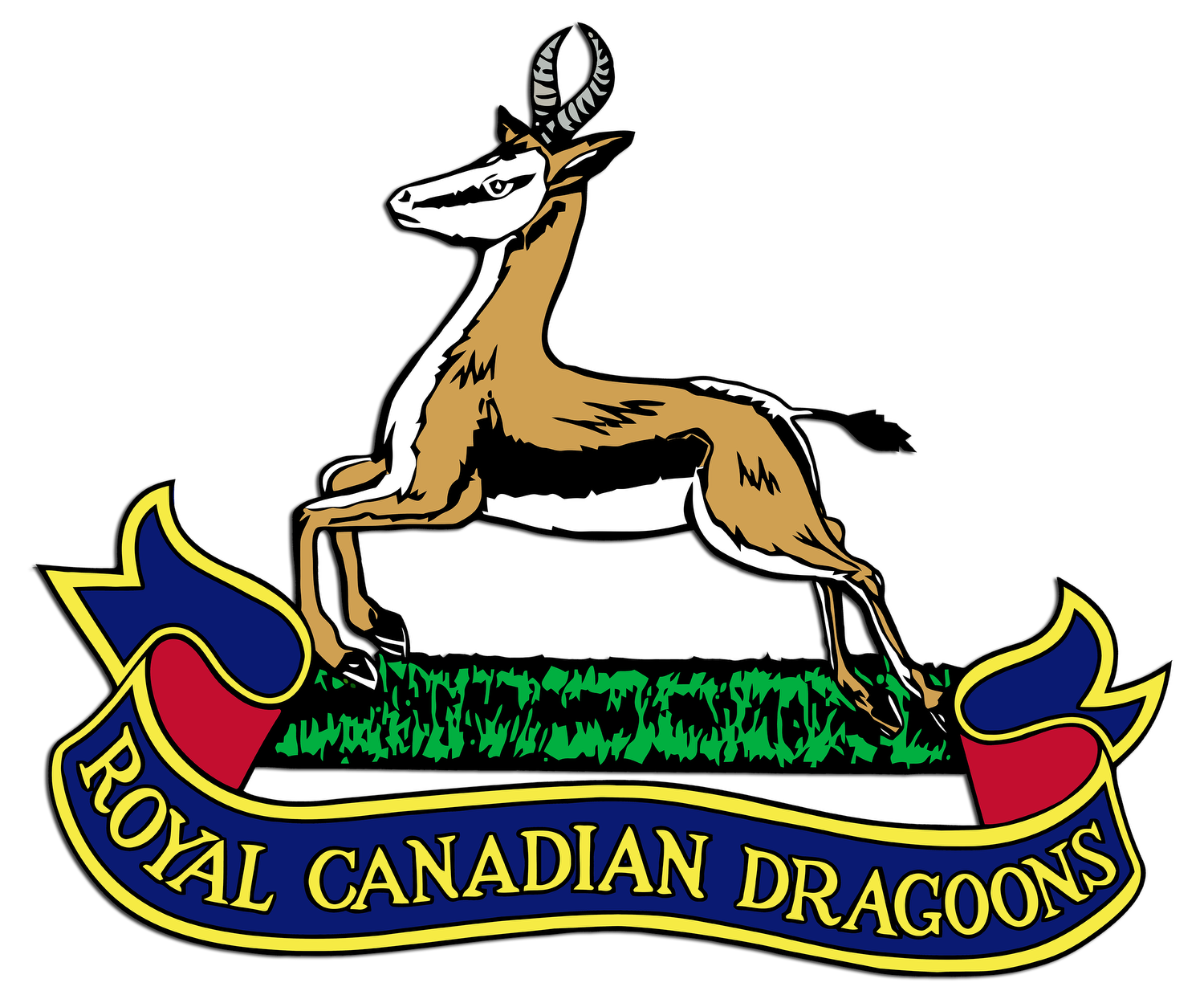A Short History of The Royal Canadian Dragoons
The Royal Canadian Dragoons (RCD) is the senior armoured regiment of the Canadian Army. It is one of three armoured regiments in the Regular Force and forms part of the Royal Canadian Armoured Corps.
The Colonel-in-Chief of The RCD is Charles, Prince of Wales. The Commanding Officer is Lieutenant-Colonel E.A. Kerckhoff, MSM, CD, and the Regimental Sergeant Major is Chief Warrant Officer Larouche, CD. The Colonel of the Regiment is Major-General Dean Milner(Retired).
The regiment is composed of Regimental Headquarters, “A”, “B”, “C”, “D” and Headquarters Squadrons. “A”, “B” and “D” Squadrons, based at CFB Petawawa, are reconnaissance squadrons in the process of adopting the Textron-produced Tactical Armoured Patrol Vehicle to replace the Coyote Reconnaissance Vehicle. “C” Squadron, based at CFB Gagetown, is equipped with 21 Leopard 2 tanks (models A4, A4M and A6M) and the squadron consists of both Dragoons and members of 12e Régiment blindé du Canada. Headquarters Squadron, based in Petawawa, provides first-line combat service support to the regiment.
FORMATION AND LINEAGE
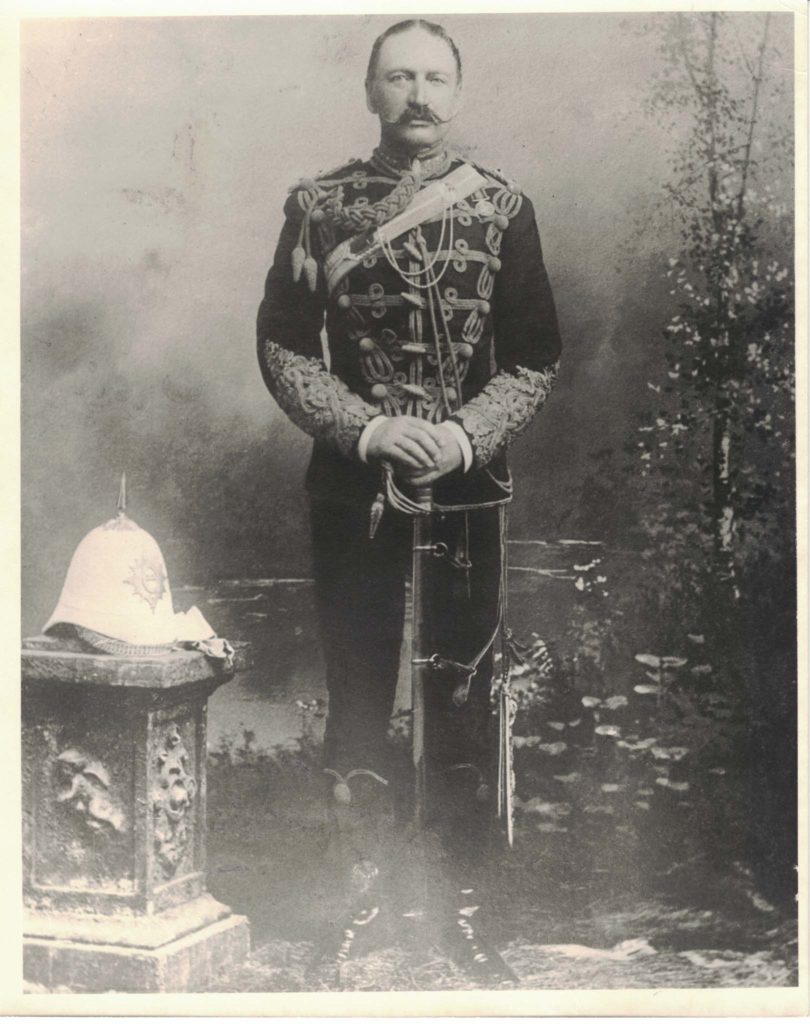
Formed on December 21, 1883 as the Cavalry School Corps, The Royal Canadian Dragoons is the senior cavalry regiment in the Canadian Army and was Canada’s first professional, full-time cavalry unit. It was originally organized as a troop (the then-company-sized British Army cavalry maneuver sub-unit, today regarded as a squadron) and was commanded by Captain (Brevet Lieutenant-Colonel) J.F. Turnbull of Quebec City’s Queen’s Own Canadian Hussars. The first Regimental Sergeant-Major was Sergeant-Major George Baxter, recruited by Lt.-Col. Turnbull from the British Army’s 4th Dragoon Guards at Albershot along with two other British Army Sergeant-Instructors from the 7th Dragoon Guards and the 15th King’s Hussars.
The Royal Canadian Dragoons
- Originated 21 December 1883 in Quebec City, Quebec as the Cavalry School Corps
- Redesignated 14 May 1892 as the Canadian Dragoons
- Amalgamated 27 June 1892 with the Canadian Mounted Rifle Corps in Winnipeg, Manitoba (lineage below): retaining its designation
- Redesignated 24 May 1893 as The Royal Canadian Dragoons
- Redesignated 16 October 1946 as the 1st Armoured Regiment (Royal Canadian Dragoons), RCAC
- Redesignated 2 March 1949 as the Royal Canadian Dragoons (1st Armoured Regiment)
- Redesignated 19 May 1958 as Royal Canadian Dragoons
- Redesignated 12 January 1959 as The Royal Canadian Dragoons
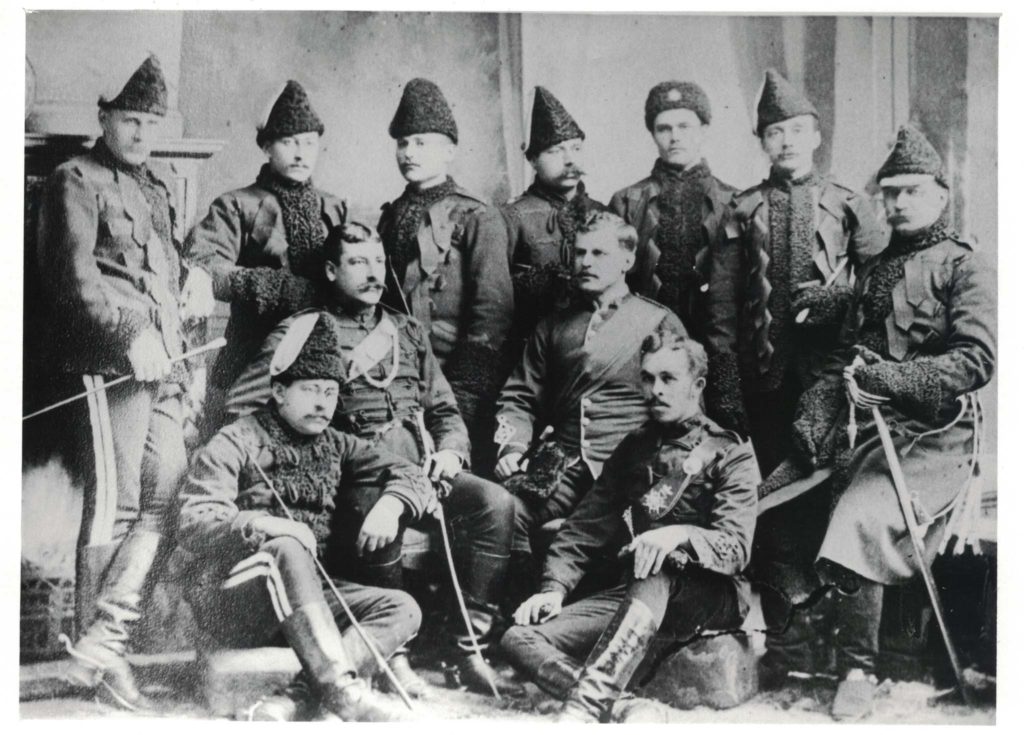
The Canadian Mounted Rifle Corps
- Originated 20 July 1885 in Winnipeg, Manitoba as the School of Mounted Infantry
- Redesignated 7 August 1891 as the Canadian Mounted Rifle Corps
- Amalgamated 27 June 1892 with the Canadian Dragoons
OPERATIONAL HISTORY
The North-West Rebellion
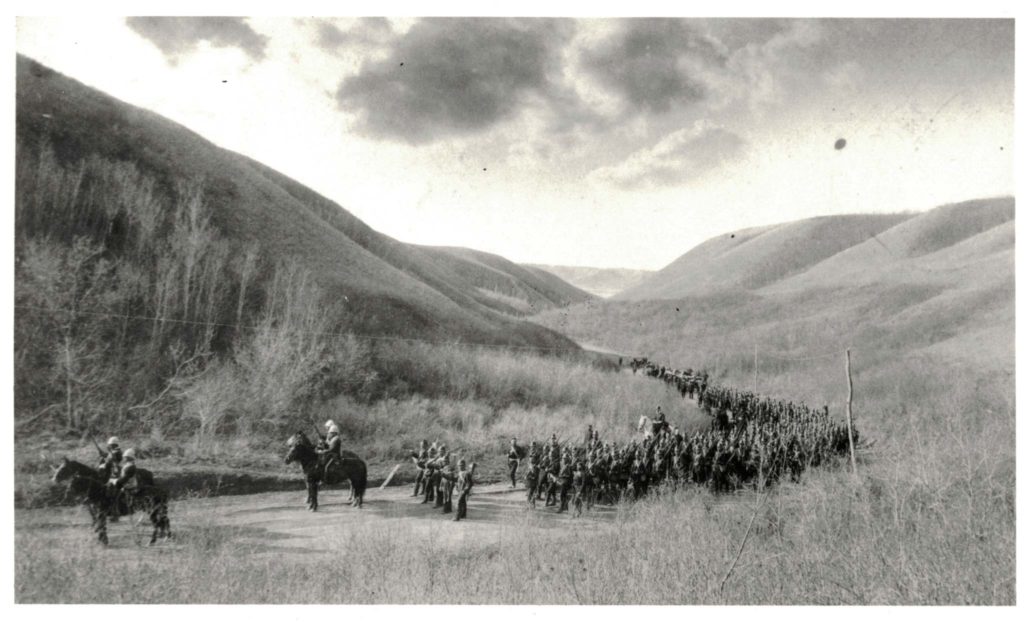
The Cavalry School Corps mobilized A Troop on 10 April 1885 for active service. It served with the Alberta Column of the North-West Field Force until it was removed from active service on 18 September 1885. A Troop patrolled the Touchwood Hills in Saskatchewan to secure the lines of communication and saw no active combat.
The Yukon Field Force
The Yukon Field Force, was a unit of 203 officers and men of the Permanent Force of the Canadian Militia that served in the Yukon between 1898 and 1900, consisting of 12 commissioned officers, 15 men from the Royal Canadian Dragoons, 46 men from the Royal Canadian Artillery and 130 men from the Royal Regiment of Canadian Infantry commanded by acting Lieutenant-Colonel Thomas D.B Evans of the RCD. The force was created in the wake of the Klondike Gold Rush in response to fears that the United States might attempt to seize the region. It left Ottawa on May 6 1898, travelling by rail and sea to the port of Glenora in British Columbia. From there, the unit made an arduous journey of 890 kilometres on foot and using makeshift boats to Fort Selkirk, where they established their headquarters. A detachment of 72 men was sent to the boom town of Dawson City to support the North West Mounted Police, with duties that included guarding the gold deposits of the local banks. As the fears of an annexation reduced, pressures grew for the recall of the force. The force was halved in size in July 1898 and the remainder were finally withdrawn in June 1900.
The force was equipped with Lee–Enfield rifles and carbines, two Maxim guns, and two 7-pounder guns, one brass and the other steel, and took along sixty horses for transport. The soldiers were issued with special heavy black pea jackets and trousers and other cold weather clothing for the winter months, along with their regular field and garrison uniforms. Their hastily purchased supplies included 123,000 kilograms of tinned meat, biscuits and flour. The soldiers were accompanied by nine “artificers” – including boat builders and packers – and eleven civil servants. The expedition was also joined by four nurses, dispatched by the Victorian Order of Nurses to work in the Yukon; the wife of a mounted police officer who was travelling to join her husband; and Faith Fenton, a journalist sent by the Toronto Globe to cover the force’s journey.
South African War
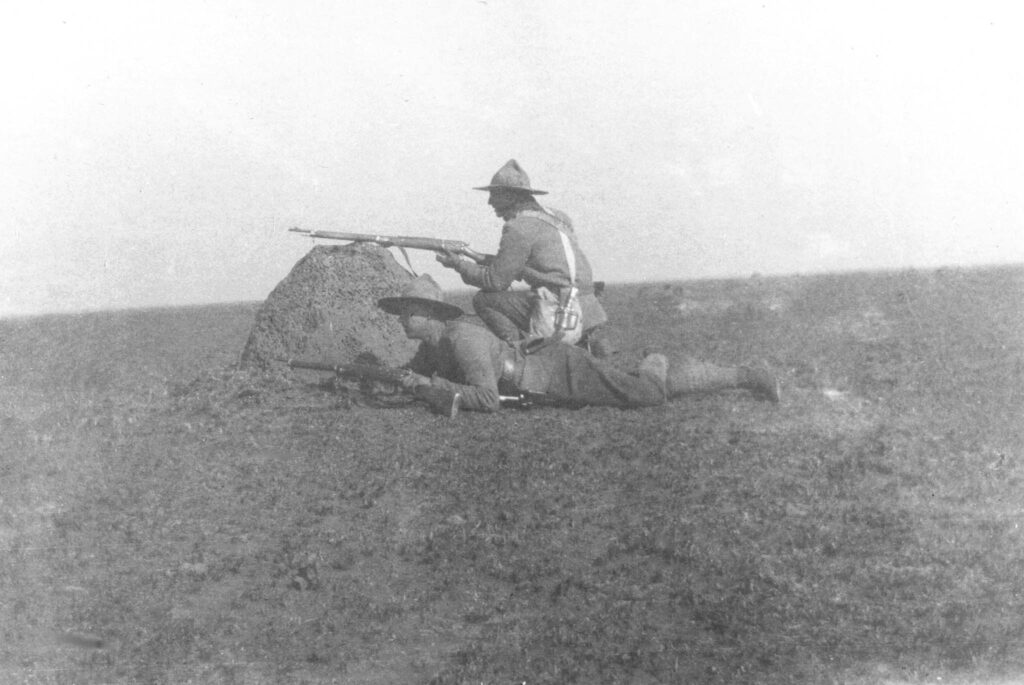
The regiment was mobilized for service in South Africa as the 1st Battalion, Canadian Mounted Rifles, and composed of 19 officers and 371 men and their horses, organized into two squadrons. The battalion embarked for South Africa on 21 February 1900, where it fought as part of the 1st Brigade, 1st Mounted Infantry Corps and as part of Major-General Sir Horace Smith-Dorrien’s column until its departure from the theatre of operations on 13 December 1900. The nucleus of each squadron was provided by the experienced regular officers, non-commissioned officers and men from The Royal Canadian Dragoons. For this reason on 1 August 1900, at the unit’s own request, the 1st Canadian Mounted Rifles were renamed the Royal Canadian Dragoons. By 12 November 1900 the regiment’s strength was down to three officers and 83 other ranks.
Two famous Dragoon casualties of South Africa were Lieutenant Harold Lothrop Borden, son of the then-Minister for Militia and Defence Frederick William Borden and Maj. A.L. “Gat” Howard, formerly the regiment’s Machine Gun Officer, who remained behind in South Africa to command “Howard’s Canadian Scouts.” Gat Howard and was captured and murdered while a prisoner.
During the regiment’s service in South Africa every junior officer, except for one, was killed in action, died of disease or was wounded, the regiment marched more than 2700 kilometers (1700 miles) and had been in action on 41 separate days.
Three Dragoons were awarded the Victoria Cross for the gallant stand at Leliefontein on 7 November 1900, a feat of arms never surpassed by Canadians and only exceeded by the British 79th Regiment of Foot at Rorke’s Drift in South Africa in 1879.
The Great War
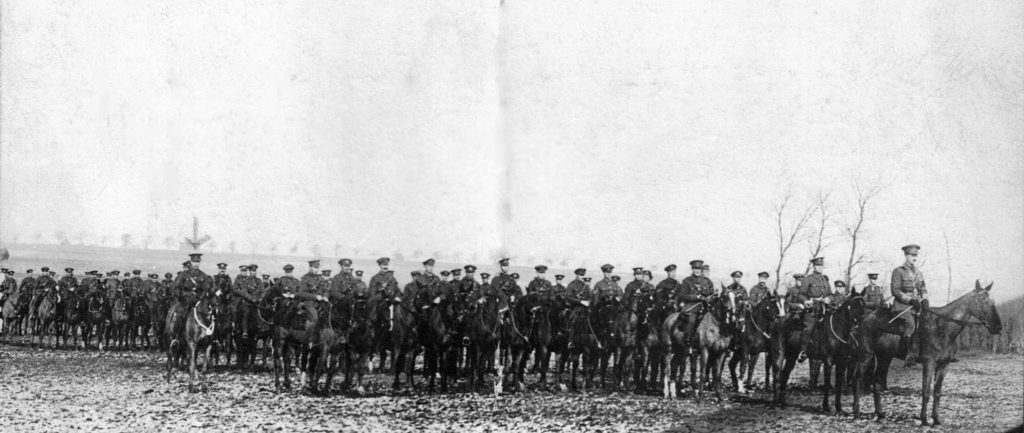
The regiment was placed on active service on 6 August 1914 for instructional and camp administration duties. On 14 September 1914 the regiment mobilized The Royal Canadian Dragoons, CEF, which embarked for England on 3 October 1914. On 5 May 1915 it disembarked in France, where it fought dismounted in an infantry role as part of Seely’s Detachment (really the Canadian Cavalry Brigade), 1st Canadian Division. On 24 January 1916, it remounted and resumed its cavalry role as part of the Canadian Cavalry Brigade with whom it continued to fight in France and Flanders until the end of the war.
The Canadian Cavalry Brigade served as part of the following British Army formations:
- 3rd Cavalry Division from 10 April to 17 June 1916
- 2nd Indian Cavalry Division/5th Cavalry Division (redesignated 26 November 1916) from 17 June 1916 to 13 March 1918
- 3rd Cavalry Division from 13 March 1918 until the end of the Great War
The overseas regiment disbanded on 6 November 1920.
The Second World War

At the start of the Second World War, The Royal Canadian Dragoons were still horse cavalry and would remain so until the regiment finally dismounted in August, 1940. On 24 May 1940, the regimental headquarters and one squadron mobilized together with the headquarters and one squadron of Lord Strathcona’s Horse (Royal Canadians) to form the short-lived 1st Canadian Motorcycle Regiment, CASF (RCD/LSH (RC)). On 21 September 1940, this regiment was redesignated as Lord Strathcona’s Horse (Royal Canadians) CASF and the Dragoons returned to the regiment. The regiment subsequently mobilized as an armoured car regiment, The Royal Canadian Dragoons (Armoured Car Regiment), CASF, on 21 September 1940. It was initially earmarked to serve in the 5th Canadian Armoured Division and embarked for Britain on 13 November 1941. The RCD landed in Sicily on 8 November 1943 and moved to mainland Italy on 5 January 1944. There it fought as the armoured car regiment for I Canadian Corps until being transferred to the 1st Canadian Infantry Division as the divisional armoured car regiment on 14 July 1944. Due to the mountainous terrain of Italy, the regiment fought much of its time there in a dismounted role as infantry.
In March 1945 the regiment moved with the I Canadian Corps to North-West Europe as part of OPERATION GOLDFLAKE, and the regiment resumed its role as the I Canadian Corps armoured car regiment. The regiment was heavily engaged in operations in the Netherlands and Germany until the end of the war. The RCD was the first Allied unit to advance through Holland to the North Sea, famously liberated the city of Leeuwarden and fought off an attempted German amphibious assault. The fighting was so intense and chaotic that two of the squadron sergeants-major, Warrant Officer 2nd Class “Taffy” Deeming and Warrant Officer 2nd Class Forgrave, were separately awarded the Distinguished Conduct Medal (second in precedence to the Victoria Cross) for dismounting the members of their supply convoys and fighting through enemy infantry positions to get fuel, ammunition, water and rations forward to their squadrons.
On 1 September 1945 a second Active Force component of the regiment mobilized for service in the Pacific theatre of operations designated as the 2nd-1st Armoured Car Regiment (The Royal Canadian Dragoons), RCAC, CASF. It was redesignated as the 2nd-1st Armoured Regiment (The Royal Canadian Dragoons), RCAC, CASF, on 15 November 1945; and as the 1st Armoured Regiment (The Royal Canadian Dragoons), RCAC, CASF, on 1 March 1946. On 27 June 1946 the regiment was embodied in the Permanent Force.
Korea

D Squadron, equipped with M4A3E8 Sherman tanks rented from the U.S. Army, served in Korea following the armistice in 1954. “Dog Squadron”, so-called because Dog was the word for the letter D in the old phonetic alphabet, were the last Canadians to operationally employ Sherman tanks.
Lieutenant Frank Sidney Stilwell died in a vehicle accident while deployed to Korea on 25 January 1954.
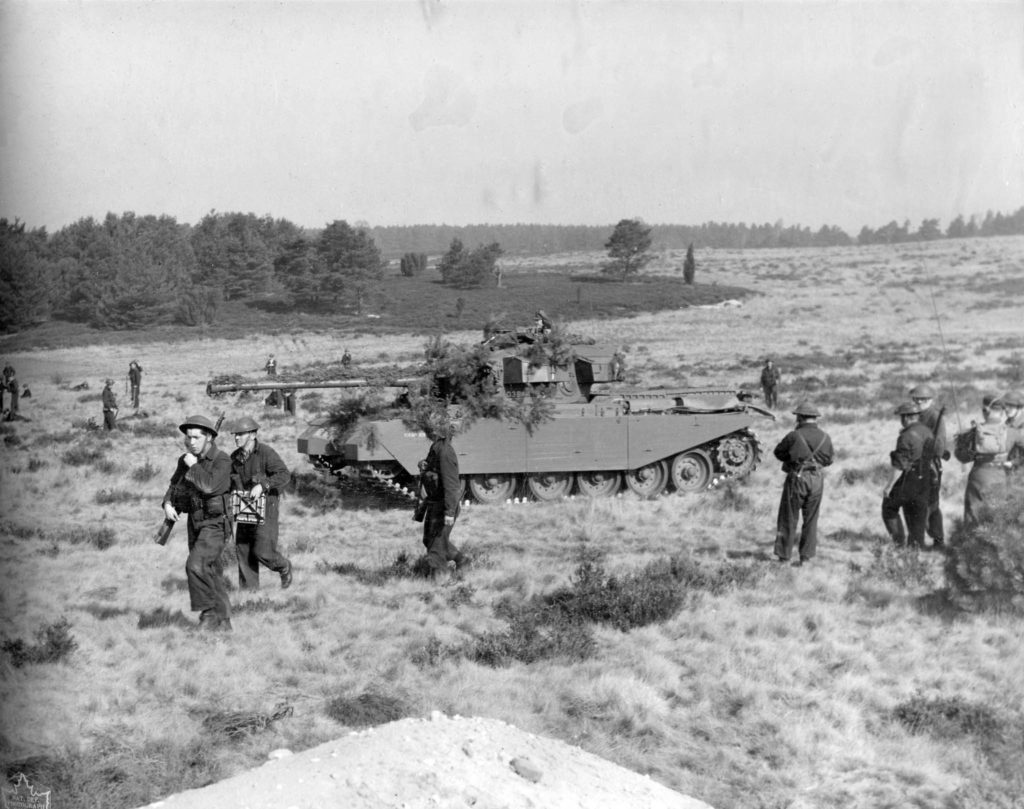
NATO and the Cold War
The Royal Canadian Dragoons were some of the first Canadian troops committed to NATO when C Squadron was posted to Bergen-Hohne in Northern Germany as the armoured component of the 27th Canadian Infantry Brigade, returning to Canada in 1955.
C Squadron was replaced by A Squadron, stationed at Fort Anne in Werl , to be joined by the rest of the regiment in Germany in 1957, with all relocating to Fort Beausejour in Iserlohn. The regiment return home to Canada (Camp Gagetown, NB) by the end of 1959.
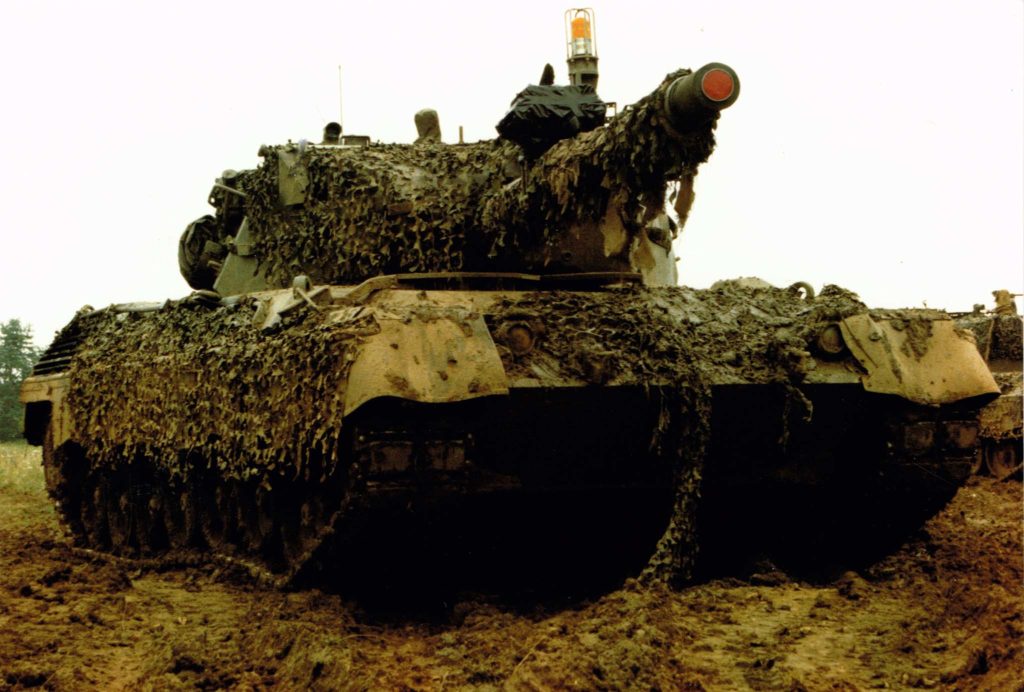
In 1970 the regiment return to NATO duty in Germany on 15 June 1970, and moved camp from Iserlohn, in Northern Germany to Canadian Forces Base Lahr in the Black Forest. The regiment as part of 4 Canadian Mechanized Brigade Group from 1970 to 1987 equipped with Centurion, rented German Leopard 1 and Leopard C1 tanks and Lynx tracked reconnaissance vehicles. During this time, the Canadian Army ceased conducting regimental rotations to 4 CMBG, going instead to a man-for-man individual rotation system.
The United Nations
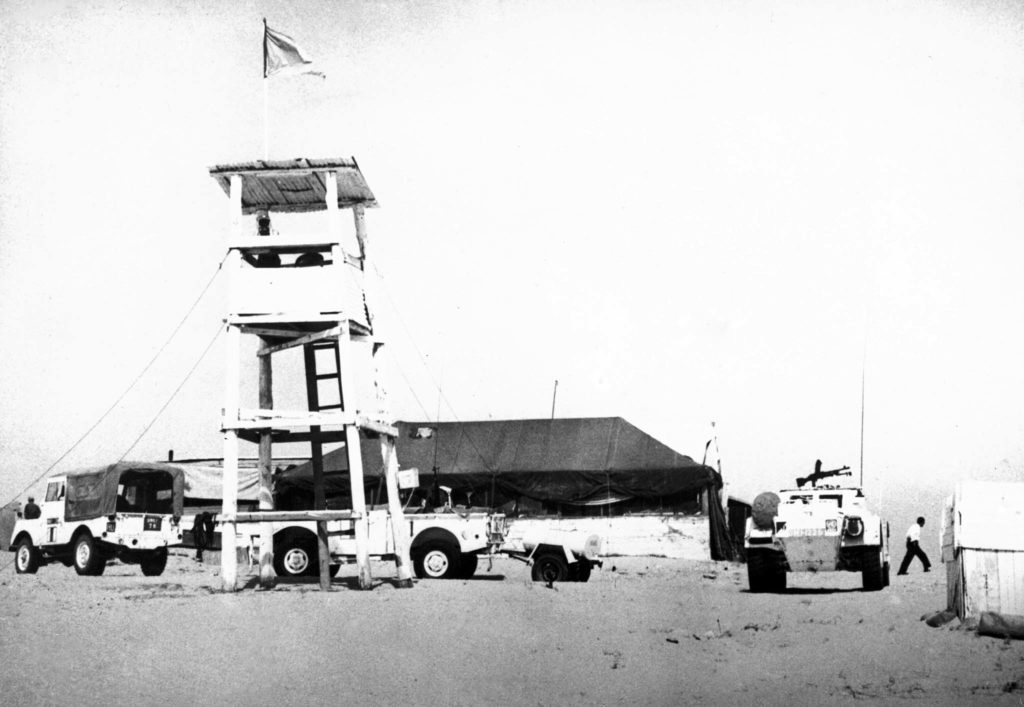
The Royal Canadian Dragoons, along with Lord Strathcona’s Horse (Royal Canadians), contributed troops to 56 Reconnaissance Squadron for duty with the United Nations Emergency Force (UNEF) from March 1957 to January 1959, equipped with Ferret scout cars. The Officer Commanding, Major R. Barry Tackaberry, the Second-in-Command, Captain J.A. Beament, the 2nd Troop Leader, Lieutenant J.G.H. Ferguson, and the 4th Troop Leader, Lieutenant J.B. Long, as well as half of the NCOs and soldiers, were Dragoons. Other squadrons of the regiment served there and in Cyprus.
Two members of 56 Recce Squadron were killed in action: Lieutenant Charles C. Van Straubenzee on 10 May 1957 and Trooper George E. McDavid on 29 November 1957.
The regiment contributed several other recce squadrons to UNEF until its demise in 1967. Trooper Ronald H. Allan was killed by Egyptian machine gun fire on 28 November 1959.

The regiment was part of the initial deployment to Cyprus as part of OPERATION SNOW GOOSE, Canada’s long contribution to UNFICYP, and conducted other squadron-sized tours as well as a regimental deployment from March to September 1989. Trooper Joseph H. “Fess” Campbell died in Cyprus on 31 July 1964.
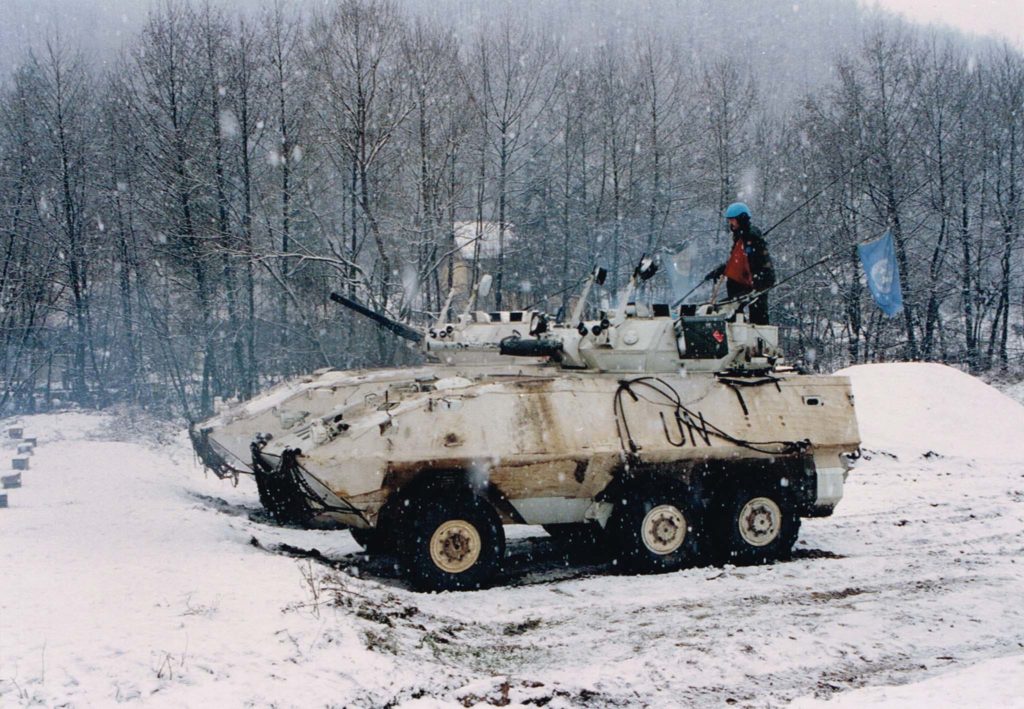
During the 1990s, the regiment conducted deployments to the Federal Republic of Yugoslavia with the UN as part of UNPROFOR, and with NATO as part of IFOR, SFOR and in Kosovo with KFOR. Corporal James Ogilvie was killed in action in the Federal Republic of Yugoslavia on 30 August 1998.
Afghanistan
The Royal Canadian Dragoons contributed both reconnaissance and tank crews to the Canadian task forces that served in Afghanistan from 2002 to 2014.
The following Dragoons fell in Afghanistan:
- Sergeant Craig Paul Gillam, 3 October 2006
- Corporal Robert Thomas Mitchell, 3 October 2006
- Trooper Mark Andrew Wilson, 7 October 2006
- Master Corporal Allan Stewart, 11 April 2007
- Trooper Patrick James Pentland, 11 April 2007
- Trooper Darryl Caswell, 11 June 2007
- Major Raymond Ruckpaul, 22 August 2007
- Trooper Brian Richard Good, 7 January 2009
- Trooper Marc Diab, 8 March 2009
- Trooper Jack Bouthillier, 20 March 2009
- Trooper Corey Joseph Hayes, 20 March 2009
- Trooper Larry John Zuidemer Rudd, 24 May 2010
Ukraine
Operation UNIFIER is Canada’s military mission to provide assistance to the training and professionalization of the Armed Forces of Ukraine. The Royal Canadian Dragoons contributed officers and soldiers to Rotation 4, and are currently leading and contributing a significant component of Rotation 5.
THE SPRINGBOK CAP BADGE
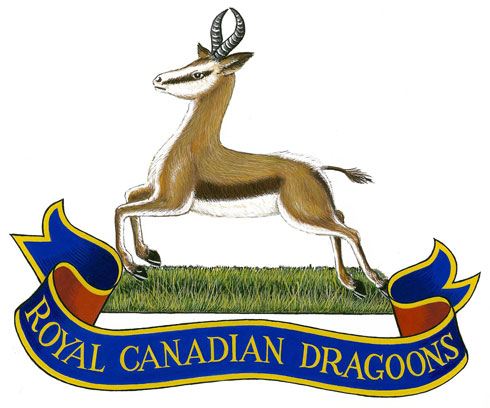
The cap badge of The Royal Canadian Dragoons features a springbok bounding on a veldt.
During the Second Boer War (1899–1902), during the advance to Pretoria, the RCD set up camp in a field. Regimental legend has it that one of the sentries noticed that some springbok were behaving erratically, and alerted the officers, who ordered a stand-to. This resulted in the defeat of Boer forces that had been trying to sneak up through the fields to attack the Canadian force. However, there is no documentary evidence of this incident. The Commanding Officer at that time, Lieutenant-Colonel Louis Lessard, makes no mention of it in his personal papers or his official reports.
It is more accurate to state that the RCD wear the springbok as a recognition for the regiment’s sterling service in South Africa. In 1913 the King agreed to change the cap badge to the springbok.
BATTLE HONOURS
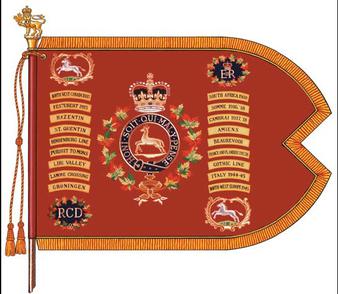
In the list below, battle honours in capitals were awarded for participation in large operations and campaigns, while those in lowercase indicate honours granted for more specific battles. Those battle honours in bold type are emblazoned on the regimental guidon.
North-West Rebellion
- North West Canada, 1885
South African War
- South Africa, 1900
The Great War
- Festubert, 1915
- Somme, 1916, ’18
- Bazentin
- Pozières
- Flers–Courcelette
- Cambrai, 1917, ’18
- St. Quentin
- Amiens
- Hindenburg Line
- St. Quentin Canal
- Beaurevoir
- Pursuit to Mons
- France and Flanders, 1915–18
Second World War
- Liri Valley
- Gothic Line
- Lamone Crossing
- Misano Ridge
- Sant’Angelo in Salute
- Fosso Vecchio
- Italy, 1944–1945
- Groningen
- Bad Zwischenahn
- North-West Europe, 1945
Afghanistan
- Afghanistan (to be emblazoned in 2020)
VICTORIA CROSSES

During the Second Boer War on November 7, 1900, The Royal Canadian Dragoons were engaged in the Action at Leliefontein. The regiment, operating in concert with the two 12 Pounder guns of the Left Section of D Battery, Royal Canadian Artillery, was acting as the rear guard for Major-General Sir Horace Smith-Dorrien’s column as it withdrew from the Komati River basin. The Boers had recently captured a quantity of British artillery ammunition and aggressively pressed the rear guard in an attempt to capture the two D Battery guns, even conducting a very rare mounted charge. In the end, the guns and the column were saved. Three Victoria Crosses were awarded to members of The Royal Canadian Dragoons for their actions during the course of the day:
- Lieutenant H.Z.C. Cockburn
- Lieutenant R.E.W. Turner
- Sergeant E.J.G. Holland
REGIMENTAL ALLIANCES
- British Army – The Blues and Royals (Royal Horse Guards and 1st Dragoons) (Allied Regiment)
- United States Army – 3rd Squadron, 71st Cavalry Regiment (Light Horse) (Bond of Friendship)
